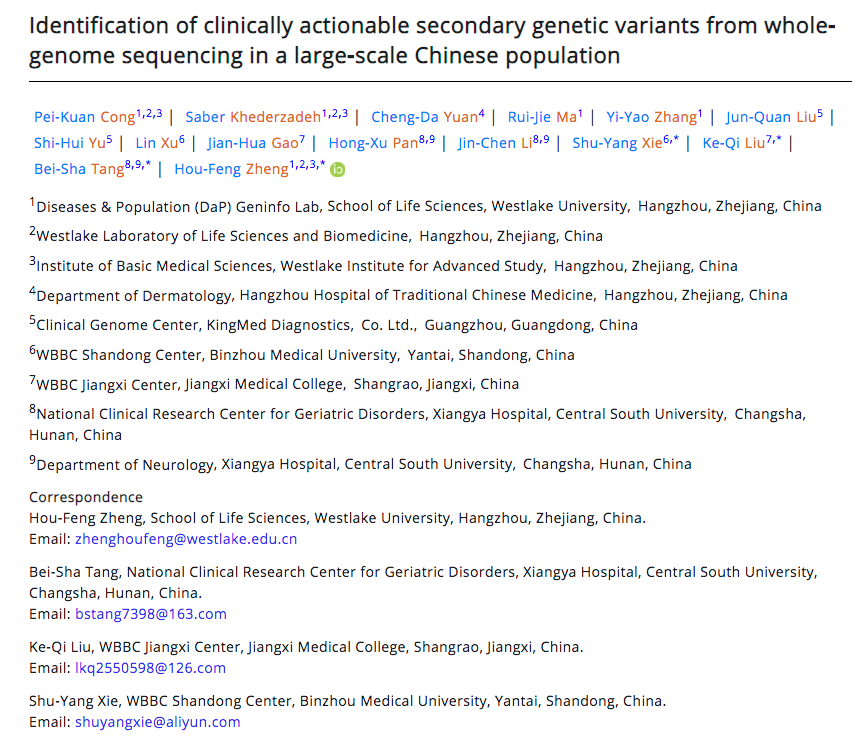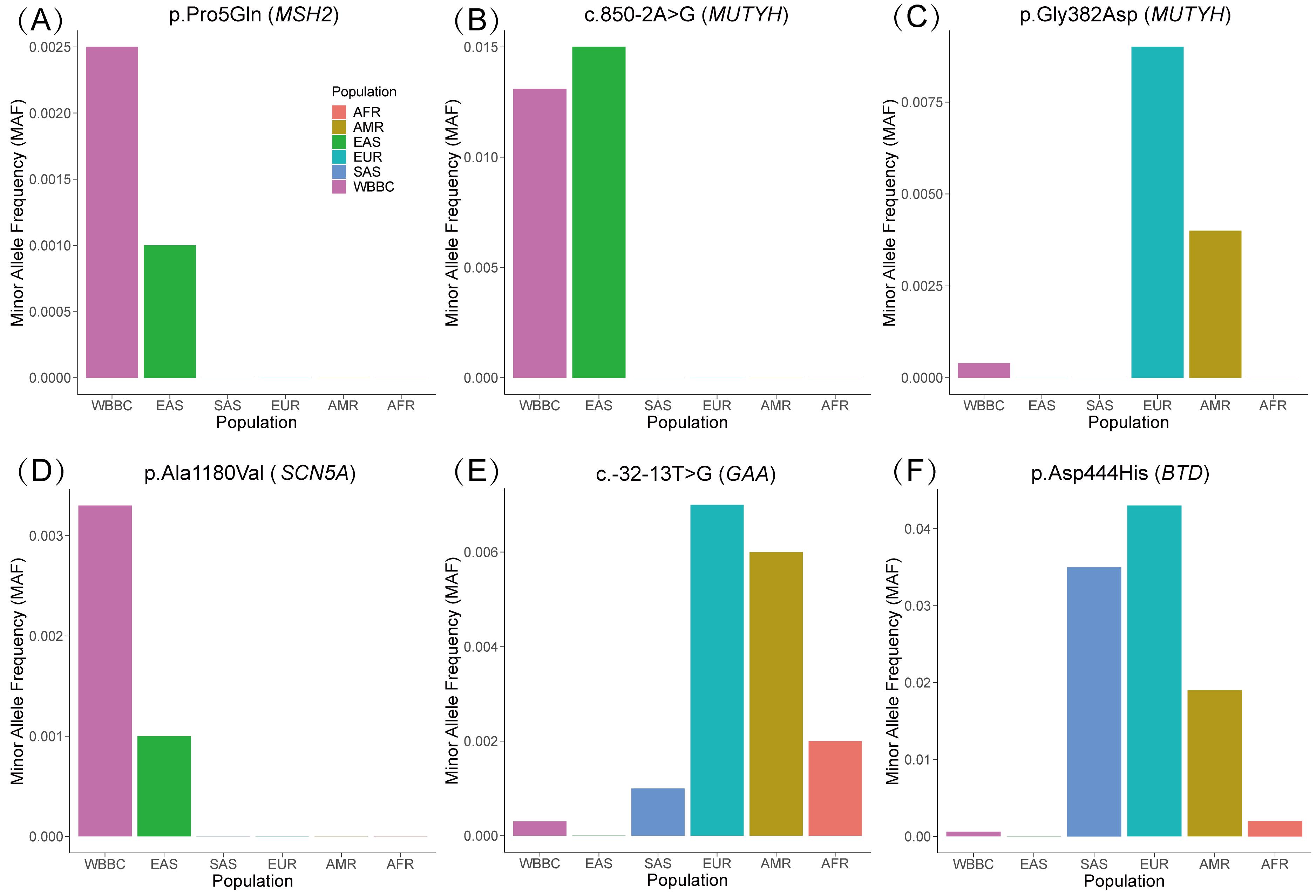Recently, the research paper Identification of Clinically Actionable Secondary Genetic Variants from Whole Genome Sequencing in a Large Scale Chinese Population co-authored by BMU and West Lake University’s Disease and Population Genetic Information Laboratory has been published in the internationally authoritative journal Clinical and Translational Medicine (IF=11.492). Professor Xie Shuyang, the chief expert of the Key Laboratory of Tumor Molecular Biology in Shandong University, is the co-corresponding author. Professor Xu Lin, Vice President of the Institute of Rehabilitation Engineering and Director of the Department of Orthopedics of BMU Yantai Affiliated Hospital, participated in the research and is also one of the authors of the paper. BMU is the joint correspondence unit of the paper.

This study performed whole-genome sequencing on 4,480 Chinese Han people, investigated the frequency spectrum of secondary genetic variation in the Chinese population for the first time, compared the ethnic differences with other populations in the world, and provided guidance for the clinical reporting of secondary genetic variation. This study found a total of 295 pathogenic or possibly pathogenic genetic variants in the 73 genes that the American Society of Medical Genetics and Genomics proposed to report in 2021, and established a database website for researchers around the world to search for (https ://wbbc.westlake.edu.cn/genotype.html). At the population level, 4.2% of individuals had pathogenic variants, and 17.37% of individuals had pathogenic or probable pathogenic variants. Considering only dominant inheritance pattern genes, 1.4% of individuals have pathogenic variants, 10.9% of individuals have pathogenic or probable pathogenic variants, 7.32% of individuals have pathogenic or probable pathogenic variants for cardiovascular disease, and 2.67% of individuals carry a pathogenic or probable pathogenic variant of cancer disease. The study also identified 24 variants in 15 genes with significant allele frequency differences between Chinese and European populations. Biotinidase deficiency is an autosomal recessive genetic metabolic disease. The incidence varies greatly among different ethnic groups. The overall incidence is about 1:60000, Brazil 1:9000, Europe 1:47486, Japan 1:150000, Zhejiang Province, China 1:620400. The causative gene of biotinidase deficiency is the BTD gene, and p.Asp444His is the most common pathogenic variant with a high carrier rate (>0.02) in non-East Asian populations, but the allele frequency in Chinese populations is only 0.006. The findings of this study have important academic and practical significance for in-depth understanding of the frequency of secondary genetic variants in the Chinese population. The study also recommends that the American Society of Medical Genetics and Genomics should include genetic diseases and their genes that are high in Asian populations, such as SLC25A13.

It is worth noting that this important research discovery has a distinct imprint of BMU. As the leader of the research project, Professor Zheng Houfeng, a distinguished researcher of the School of Life Sciences of West Lake University, is a 1999 grade alumnus of our school, and the corresponding author, Professor Xie Shuyang and participating author, Professor Xu Lin, are full-time academic backbone and subject leader of BMU. The academic paper published this time is an important research result of the WBBC project (Westlake BioBank for Chinese, https://wbbc.westlake.edu.cn/). A total of 100,000 people were collected within China as research subjects, and the project aims to use omics data to guide clinical research. In 2018, Wang Guangcheng, Vice President of BMU, led a team to Westlake University for inspection and exchange, and reached a consensus on the cooperation of the project with Dr. Zheng Houfeng, Director of the Laboratory of Disease and Population Genetic Information of Westlake University and his team members, and formed a specific implementation plan. In July 2020, BMU, as an important participating unit, cooperated with the team of Zheng Houfeng of West Lake University to elucidate the relationship between psoriatic arthritis and osteoporosis. The research results were published in the Annals of the Rheumatic Diseases. (IF=19.103). The successful research of this research result is another important research progress in deepening cooperation between our school and the Laboratory of Disease and Population Genetic Information of West Lake University, which confirms the successful practice of BMU's opening-up school-running strategy in recent years. Next, as an important participating unit of WBBC, our school will continue to produce a series of original results, including the Chinese population genomics research paper Genomic analyses of 10,376 individuals in the Westlake BioBank for Chinese (WBBC) pilot project, which has been received in Nature communications. This cooperative project will continue to use omics data to guide clinical research and contribute to the construction of a high-level medical university.
SOURCE: News Center
BY: Gao Sen





